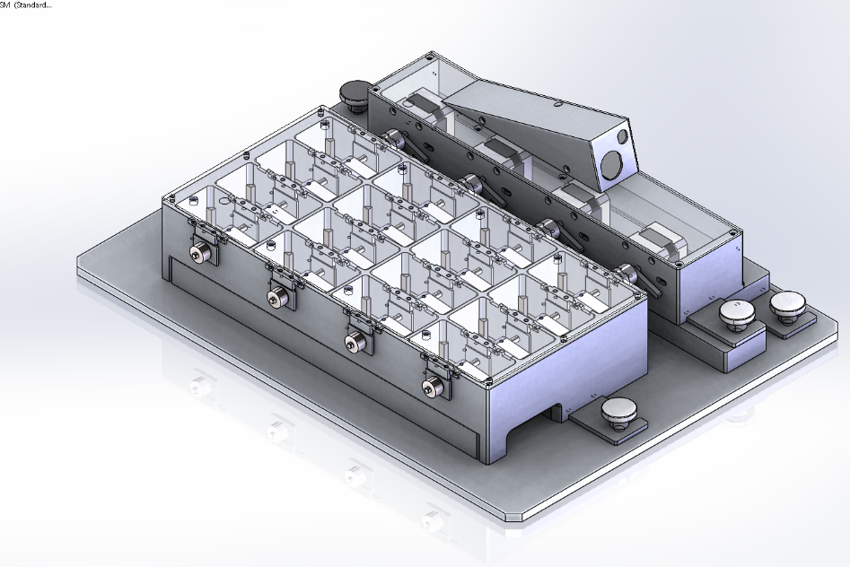Rational design of scaffolds for cartilage regeneration using finite element modelling (FEScaf)
Background
The repair of traumatic injuries to articular cartilage is one of the major challenges in orthopedics. While there is agreement that new biomaterials to enhance repair are required, static (non-mechanically loaded) in vitro platforms lack the complex in vivo loading patterns.
Goal
A medium throughput platform that allows multiple implants to be mechanically loaded simultaneously, would allow for more representative testing of novel materials and treatments for cartilage repair.
Results
In previous studies we have shown using primary human bone marrow derived stromal cells that chondrogenesis can be induced using mechanics alone. We have also shown that redistributing cells within the scaffold can dramatically enhance matrix deposition, while the cell number is kept constant and shear is a major aspect of the response obtained. We therefore designed a 16-chamber loading device that can apply compression and interfacial shear simultaneously, mimicking joint kinematic load. This new platform offers significant opportunities for in vitro testing, following 3R principles by reducing the need for in vivo studies.
-
Publication
Johnstone B, Stoddart MJ, Im GI. Multi-disciplinary approaches for cell-based cartilage regeneration. J Orthop Res. 2019 Sep 3. doi: 10.1002/jor.24458.
-
Presentation
Stoddart MJ.The role of joint-mimicking mechanical loading in cartilage regeneration models. Erasmus+ workshop on Biomechanics, Heidelberg, Germany. (oral)
Stoddart MJ. Mechanical regulation of MSC chondrogenesis. Can we repurpose rehabilitation? Musculoskeletal Research Conference, Mayo Clinic, USA. (oral)


